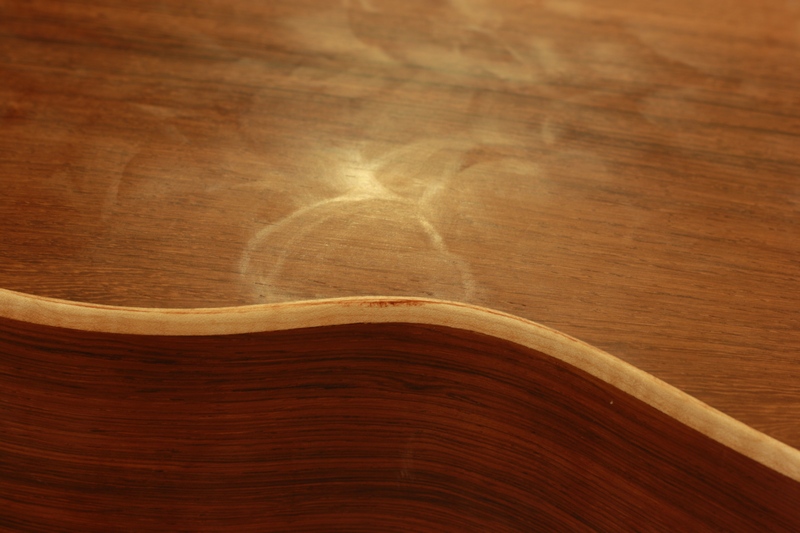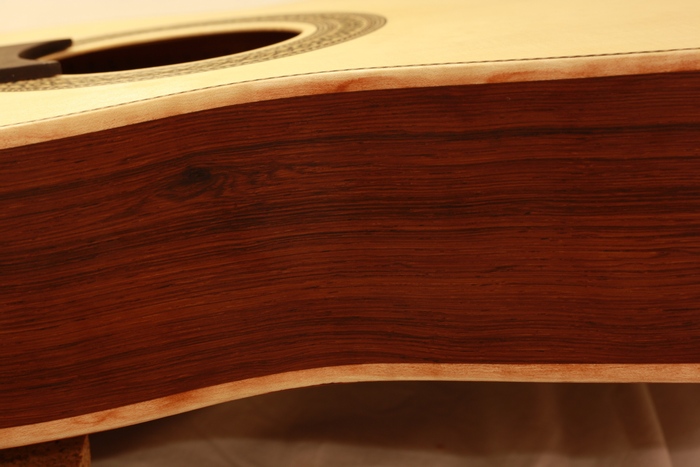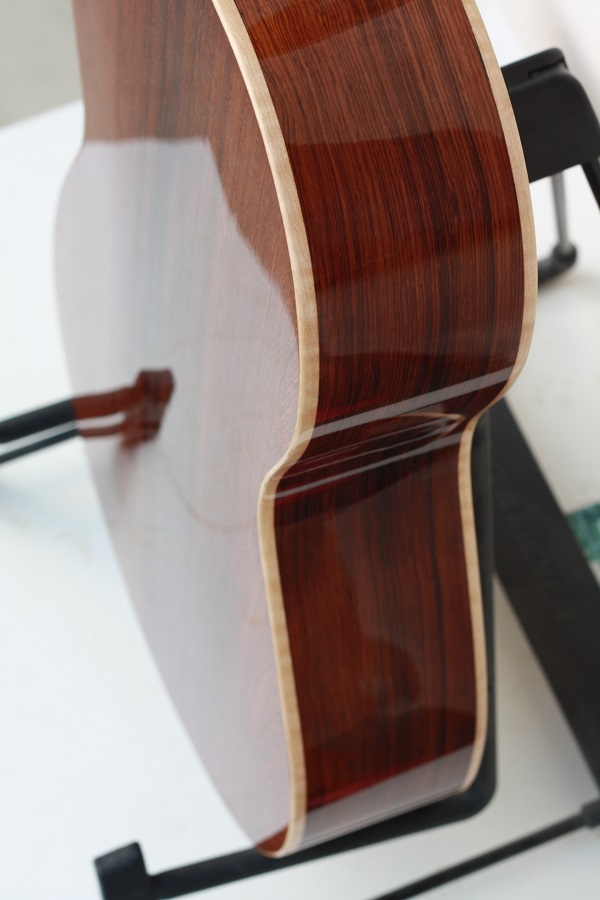Welcome to one of the most active flamenco sites on the Internet. Guests can read most posts but if you want to participate click here to register.
This site is dedicated to the memory of Paco de Lucía, Ron Mitchell, Guy Williams, Linda Elvira, Philip John Lee, Craig Eros, Ben Woods, David Serva and Tom Blackshear who went ahead of us.
We receive 12,200 visitors a month from 200 countries and 1.7 million page impressions a year. To advertise on this site please contact us.
|

|
|
stained maple binding
|
You are logged in as Guest
|
|
Users viewing this topic: none
|
|
Login  | |
|

   
estebanana
Posts: 9351
Joined: Oct. 16 2009

|
 RE: stained maple binding (in reply to kominak) RE: stained maple binding (in reply to kominak)
|
|
|
Good to hear it did not get the binding dirty.
This is one of those small operations that you learn a way through. A couple suggestions that may help. Treat the edges of the pumice process by flicking your hand movement towards the middle of the back away from the edge. So you are not rolling the pumice slurry over the edge. Also I think about bright bindings and I put more shellac on before any pumice to get a better seal on the rosewood. The rosewood is very likely still giving up color through the shellac sealing, there is not enough rosewood 'saw dust' to make that much color.
When FP a rosewood guitar I put a lot of shellac on first as a seal. I use a brush, paper towel or a folded piece of terry cloth and lay it on. If the bindings are already slick with shellac the first applications move right over the binding and any color that comes off can be wiped off. I also waste quite a bit of towel applicator by constantly folding under the color stained areas. You know when you've gotten the color sealed because it's not coming off on your applicator tool. Then I go a little farther and put on more shellac, because when you pore fill it is quite an abrasive process so extra shellac keeps the color in.
But here's where I go off course from regular FP process. I let the wiped on shellac dry for a couple days or even a week and let it get hard. Then I flat board sand it with a woven abrasive made for auto body work. The abrasive is similar to the 'micro mesh' abrasives, but it is woven. This material cuts and levels the hard shellac and it is made to 'track' over shallow spots and cut higher surfaces more accurately then sand paper. After a good leveling I put on more wiped shellac and use the woven abrasive again the next day. Then I pore fill and with a light hand pressure. Like a wiping perpendicular to the grain direction and pushing it across the grain and down in.
The product is called Assilex , it made by Kovax a Japanese company. You can get it on Amazon in most parts of the world. The SkyBlue color Assilex is equivalent to 600 sand paper, but it cuts much, much faster and does not leave scratch marks, the woven fibers are like millions of microscopic scraper blades. After a few days of wiping on shellac and cutting it back level you have virtually bodied up shellac on the guitar and can pore fill over thicker seal. Then cut that pore filler back and spot pore fill where you have rough spots. After that then you go to end the bodying process by regular French polish work with a pad. One or two sessions finishes the bodying and moves right into the final work.
I really, really dislike color rosewood bleeding, I just want the color sealed in no matter what. So I've been using the SkyBlue woven abrasive since I found it in 2011. I did an online search for abrasives of different kinds and found that one. I called the dealer and they sent my a sample, after that I ordered it by the box. I showed it to a guy who French polished professionally and he began using right way. He asked me to keep it a secret while he was handling a lot of work by a certain maker. But he's not doing as much so I've shared it lately.
The whole Clark / as told to Milburn process is great, but over complicated. I wanted to simplify it from the beginning. Once I had the woven abrasive I just rewrote the rule book for myself.
You just figure out a way to work the edges without the bleeding. And rosewoods sets are different in how much color they release, some are really not colorfast and bleed like crazy and other sets not at all.
I have some friends who make steel strings guitars who like to wipe out some of the color before binding, but I think there always more in there. I think the best you can do is shellac seal until there's minimal or no color coming off.
_____________________________
https://www.stephenfaulkguitars.com
|
|
|
|
REPORT THIS POST AS INAPPROPRIATE |
Date May 22 2017 23:15:32
 |
|
 New Messages New Messages |
 No New Messages No New Messages |
 Hot Topic w/ New Messages Hot Topic w/ New Messages |
 Hot Topic w/o New Messages Hot Topic w/o New Messages |
 Locked w/ New Messages Locked w/ New Messages |
 Locked w/o New Messages Locked w/o New Messages |
|
 Post New Thread
Post New Thread
 Reply to Message
Reply to Message
 Post New Poll
Post New Poll
 Submit Vote
Submit Vote
 Delete My Own Post
Delete My Own Post
 Delete My Own Thread
Delete My Own Thread
 Rate Posts
Rate Posts
|
|
|
Forum Software powered by ASP Playground Advanced Edition 2.0.5
Copyright © 2000 - 2003 ASPPlayground.NET |
0.0625 secs.
|


 Printable Version
Printable Version










 New Messages
New Messages No New Messages
No New Messages Hot Topic w/ New Messages
Hot Topic w/ New Messages Hot Topic w/o New Messages
Hot Topic w/o New Messages Locked w/ New Messages
Locked w/ New Messages Locked w/o New Messages
Locked w/o New Messages Post New Thread
Post New Thread